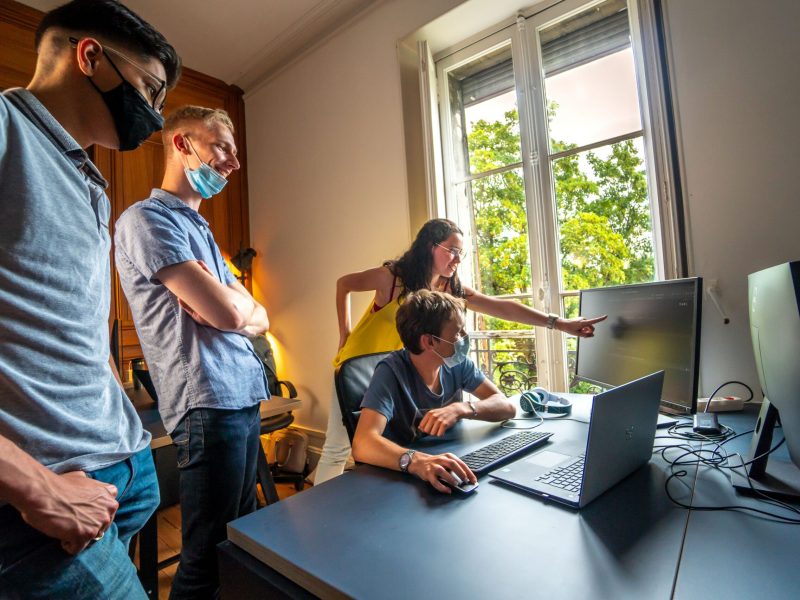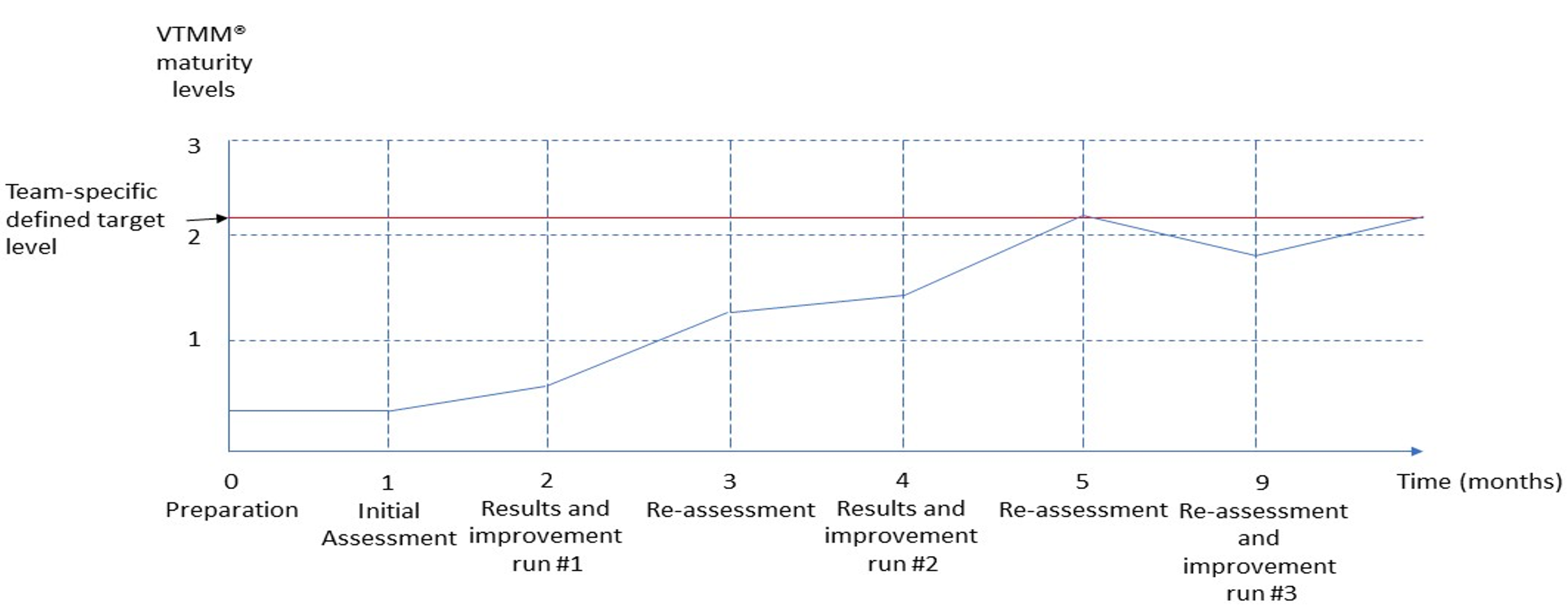Virtual team assessment
VTMM® – Virtual Team Maturity Model is an easy, quick, and powerful tool that supports virtual team leaders in making team performance a focus. VTMM® was developed as an agile maturity model, that delivers quick results in assessing key factors of virtual team performance in 11 categories. Based on the evaluated state of the team it develops team maturity through improvement sprints. In each sprint, up to three prioritised action points for improvement are implemented. Normally, a team achieves its optimal performance after three improvement sprints.




